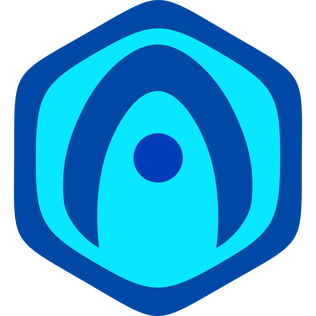Autodesk 3ds Max, formerly 3D Studio and 3D Studio Max, is a professional 3D computer graphics program for making 3D animations, models, games and images. It is developed and produced by Autodesk Media and Entertainment. It has modeling capabilities and a flexible plugin architecture and must be used on the Microsoft Windows platform. It is frequently used by video game developers, many TV commercial studios, and architectural visualization studios. It is also used for movie effects and movie pre-visualization. 3ds Max features shaders, dynamic simulation, particle systems, radiosity, normal map creation and rendering, global illumination, a customizable user interface, and its own scripting language.

Gmax is an application based on Autodesk's 3ds Max application used by professional computer graphics artists. 3ds Max is a comprehensive modeling, animation and rendering package with some secondary post-production and compositing features. Gmax is much more limited due to its singular intended use—game content creation. Infrequently used tools and features, or the ones completely unrelated to creating 3D game models, were removed, leaving the core modeling, texturing, and basic animation rigging and keyframing capabilities. In 2005, the promotional freeware software was discontinued after version 1.2.

In computing, a visual programming language or block coding is a programming language that lets users create programs by manipulating program elements graphically rather than by specifying them textually. A VPL allows programming with visual expressions, spatial arrangements of text and graphic symbols, used either as elements of syntax or secondary notation. For example, many VPLs are based on the idea of "boxes and arrows", where boxes or other screen objects are treated as entities, connected by arrows, lines or arcs which represent relations.

OpenSceneGraph is an open-source 3D graphics application programming interface, used by application developers in fields such as visual simulation, computer games, virtual reality, scientific visualization and modeling.
COLLADA is an interchange file format for interactive 3D applications. It is managed by the nonprofit technology consortium, the Khronos Group, and has been adopted by ISO as a publicly available specification, ISO/PAS 17506.
SpeedTree is a group of vegetation programming and modeling software products developed and sold by Interactive Data Visualization, Inc. (IDV) that generates virtual foliage for animations, architecture and in real time for video games and demanding real time simulations.

Rhinoceros is a commercial 3D computer graphics and computer-aided design (CAD) application software that was developed by TLM, Inc, dba Robert McNeel & Associates, an American, privately held, and employee-owned company that was founded in 1978. Rhinoceros geometry is based on the NURBS mathematical model, which focuses on producing mathematically precise representation of curves and freeform surfaces in computer graphics.
Navisworks is a 3D design review package for Microsoft Windows.

3D computer graphics, sometimes called CGI, 3-D-CGI or three-dimensional computer graphics, are graphics that use a three-dimensional representation of geometric data that is stored in the computer for the purposes of performing calculations and rendering digital images, usually 2D images but sometimes 3D images. The resulting images may be stored for viewing later or displayed in real time.
3D computer graphics software refers to programs used to create 3D computer-generated imagery.
Cyber Studio CAD-3D is a 3D modeling and animation package developed by Tom Hudson for the Atari ST computer and published by Antic Software. The package is a precursor to 3D Studio Max.

Flare3D is a framework for developing interactive three-dimensional (3D) graphics within Adobe Flash Player, Adobe Substance and Adobe AIR, written in ActionScript 3. Flare3D includes a 3D object editor and a 3D graphics engine for rendering 3D graphics. Flare3D runs on current web browsers utilizing the Adobe Flash Player, and uses Stage3D for GPU-accelerated rendering. Flare3D has not been under active development since late 2014.

Art of Illusion is a free software, and open source software package for making 3D graphics.

Verge3D is a real-time renderer and a toolkit used for creating interactive 3D experiences running on websites.
Universal Scene Description (USD) is a framework for interchange of 3D computer graphics data. The framework focuses on collaboration, non-destructive editing, and enabling multiple views and opinions about graphics data. USD is used in many industries including visual effects, architecture, design, robotics and CAD. It is developed by Pixar and was first published as open source software in 2016, under a modified Apache license. Pixar, Adobe, Apple, Autodesk, and NVIDIA, together with the Joint Development Foundation (JDF) of the Linux Foundation, announced the Alliance for OpenUSD (AOUSD) on August 1, 2023 to "promote the standardization, development, evolution, and growth of Pixar's Universal Scene Description technology."






